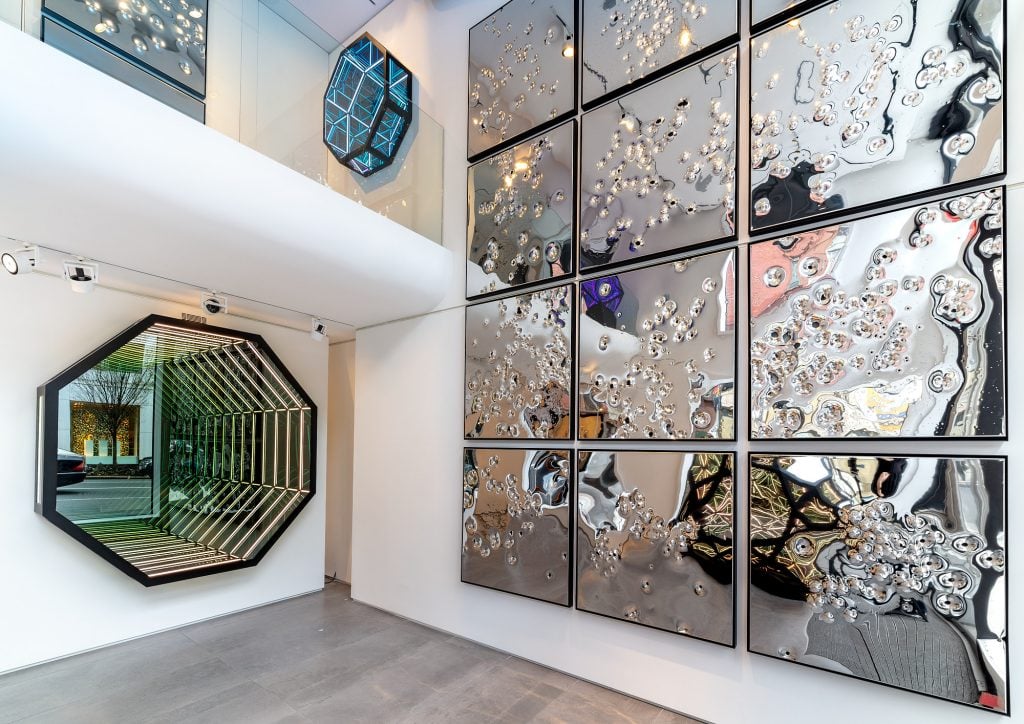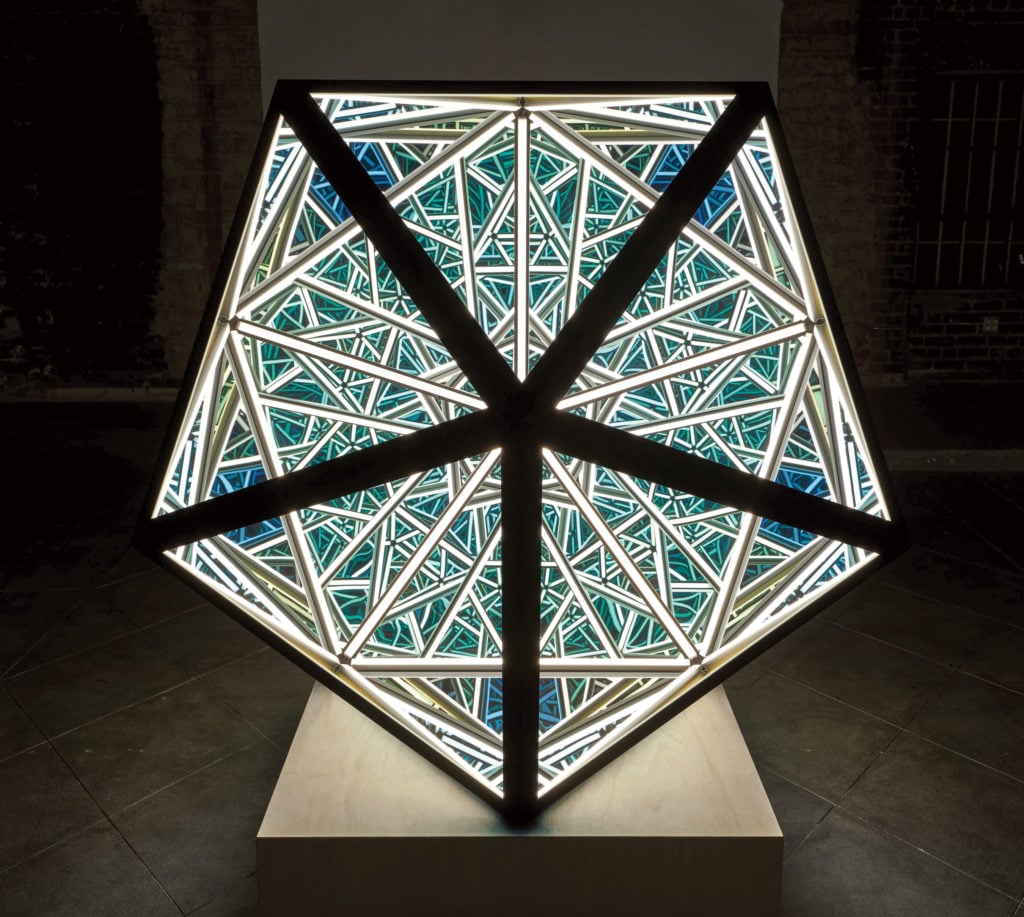Art World
Is Maurizio Cattelan’s New Work a Bit Too Similar to Sculptures by Anthony James?
Both are made with bullets and shiny metals.

Both are made with bullets and shiny metals.

Brian Boucher

A new work by Maurizio Cattelan going on view at New York’s Gagosian Gallery on Tuesday, April 30, consists of a large array of panels of gold, dented by gunfire.
A number of works by Anthony James going on view at a showroom at 425 Park Avenue on Tuesday consist of a large array of panels of mirror-polished stainless steel, dented by gunfire.
If that sounds close to you, well, it definitely sounds too close to James.
“They’re pretty much identical,” said the British-American artist, “which is kind of crazy and kind of worrying.” Similar works by James, moreover, were shown in 2022 at New York’s Opera Gallery, on the Upper East Side, not far from Gagosian’s 980 Madison Avenue location, he pointed out. While this is Cattelan’s first work of this type, James started creating such works a decade ago and has shown them in cities the world over, including, he said, in 2011 at Brand New Gallery in Milan. (James noted that Cattelan has homes in Milan and New York.)
James added that he’s not the first to accuse Cattelan of copying. One of Cattelan’s trademark creations, the viral banana duct-taped to a wall at Perrotin’s Art Basel Miami Beach booth in 2019, titled Comedian, resulted in a plagiarism lawsuit. Joe Morford, the artist who brought that complaint, lost when a judge ruled his work too obscure for Cattelan to have seen it.

Anthony James. Portal Icosahedron, Courtesy of Melissa Morgan Fine Art.
This isn’t exactly the same David-versus-Goliath kind of matchup. Given his global exhibition history, his 100,000-strong Instagram following, and his collaborations with brands like Pommery, Aston Martin, and David Yurman, James can’t exactly be described as obscure; he’s something of a Goliath himself. (The 4,000-square-foot showroom in the Norman Foster–designed Park Avenue skyscraper, rented to coincide with Frieze week, can’t have been cheap.)
Gagosian declined to comment.
James’s inspiration for the pieces, as it happens, lies partly in the work of another Italian artist, Lucio Fontana, specifically drawings in which he punctured pieces of paper with a pencil, recalling the concept that “out of destruction comes creation.” They can also recall a cosmic sight like a night sky; the other sculptures at 425 Park Avenue are dazzling Op Art–style sculptures that reveal seemingly endless spaces inside.
With Maurizio Cattelan’s new exhibition at the Gagosian Gallery in Chelsea, the Italian artist confronts gun violence in America. Viewers see their own reflections riddled with bullet holes in the seductive beauty of gold’s glimmer. https://t.co/4Yk6jJBN4i
— New York Times Arts (@nytimesarts) April 25, 2024
In a New York Times profile, Cattelan said his gun-shot piece, Sunday, is about smashing up a luxurious material with the brutality that riddles society: “When I read the front page of the newspapers, all they talk about is violence,” he said. “I’m completely immersed in violence.”
Artists have a long history of using guns as social commentary. Among many instances, there was Chris Burden’s Vietnam-era performance Shoot (1971), the 2015 show “Guns in the Hands of Artists,” Bayeté Ross Smith’s educational trip to a firing range in 2016, and street artist JR’s cover for a 2018 Time magazine special edition on the issue.
Cattelan has also worked with weapons before, as the Times pointed out, having exhibited American and British flags torn up by gunfire. In his dream work, gallery visitors stand on one side of bullet-proof glass while a gunman fires toward them from the other side.
Amy Adler, a professor of law at New York University, said James would face some hurdles if he were to file a legal complaint. “You can only get copyright for the expression of an idea, not the idea itself,” she said, “so the idea of shot-up panels of metal is not copyrightable, but the way it ends up looking is potentially copyrightable.”
Adler was reminded of a 1936 observation by New York judge Learned Hand: “If, by some magic, a man who had never known it were to compose anew Keats’s ‘Ode on a Grecian Urn,’ he would be an ‘author,’” Hand wrote, “and if he copyrighted it, others might not copy that poem, though they might of course copy Keats’s.”
But James, for his part, is convinced that there’s no magic in Cattelan creating work that looks so much like his.
“There’s no chance that he hasn’t seen them or that they haven’t come to his attention,” he said. “I’ll let you decide.”